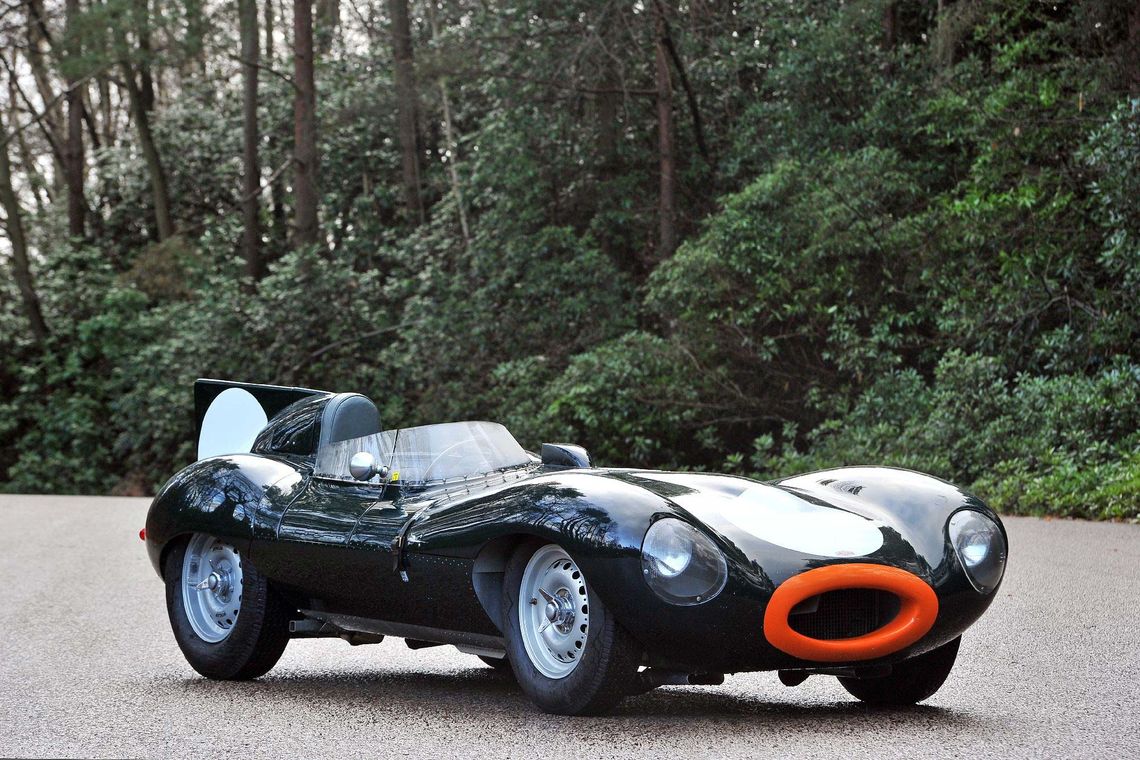


Chassis: XKD545
With three consecutive wins at Le Mans and over 150 international victories, the Jaguar D-Type is arguably Britain’s greatest motor racing export. Malcolm Sayer’s aeronautically inspired body, allied to Jaguar’s well-established XK engine, made for a truly inspired package.
Launched in 1954 with a 3.4-litre straight-six powerplant and distinctive short-nose body, the D-Type displayed enormous potential, with Rolt and Hamilton finishing second at Le Mans despite all three works-entered cars suffering from fuel starvation. Encouraged by the promising performance, Jaguar further developed the D-Type works machines for 1955 by lengthening the nose and, crucially, solving the fuel filter issues which hampered the previous year’s efforts. Now fitted with a 3.8-litre XK engine, success for the D-Type looked inevitable.
The 1955 season began with the works and Ecurie Ecosse-entered cars claiming the laurels at Sebring, the Nurbürgring and Goodwood. However the D-Type’s job would not be complete until it had taken the chequered flag first at Le Mans.
The ensuing victory at La Sarthe should have capped the D-Type’s season but, in the wake of the 1955 event’s disaster, celebrating Jaguar’s achievement would have been crass. Indeed, the question of whether the British machine would have won at all had Mercedes not retired its surviving fleet is still debated.
The car was vindicated by victories in 1956 and ‘57 for Scottish outfit Ecurie Ecosse, whose D-Types overcame works efforts from Ferrari and Aston Martin to achieve famous outright wins. Soon after, however, changes to sportscar racing’s regulations stipulating an engine limit of 3-litres ended the D-Type’s glory days.
Chassis XKD545 was completed in 1955 as a 3.4-litre, short-nose customer-spec car and, after 300 miles of factory testing at MIRA, began a transatlantic voyage in December to the New York importer Max Hoffman. XKD545 stayed with Hoffman until it was purchased by its first owner, Jake Kaplan, in March 1956.
Wasting no time in using his example of a now-Le Mans winning car, Kaplan entered the pastel blue XKD545 at the ninth annual 12 Hours of Sebring. Brake problems limited its race to 120 of the eventual 194-lap distance, with a resulting classification of 31st. A second retirement at Montgomery with new owner George Constantine was followed by a third-place place at Thompson Raceway.
Constantine then took XKD545 to an impressive overall win at the 1956 Watkins Glen Grand Prix, securing the D-Type its rightful place in American racing history. He later scored seventh overall at the Nassau Trophy amidst a field that included the likes of Moss, Fitch and Hill, while his wife Mary also campaigned XKD545 in the Bahamas Week Ladies Race.
At this point XKD545 was retired from top-level race meetings and given a sabbatical from motorsport until September 1957. When Constantine sold the car in 1958 it began a life of recreational use while also successfully competing at club events. Active in every decade since, its recent outings have shown XKD545 to be one of the fastest surviving D-Types.
With a colourful period history and offered in a remarkably race-ready condition, XKD545 represents a fantastic opportunity to join the exclusive club of D-Type owners.